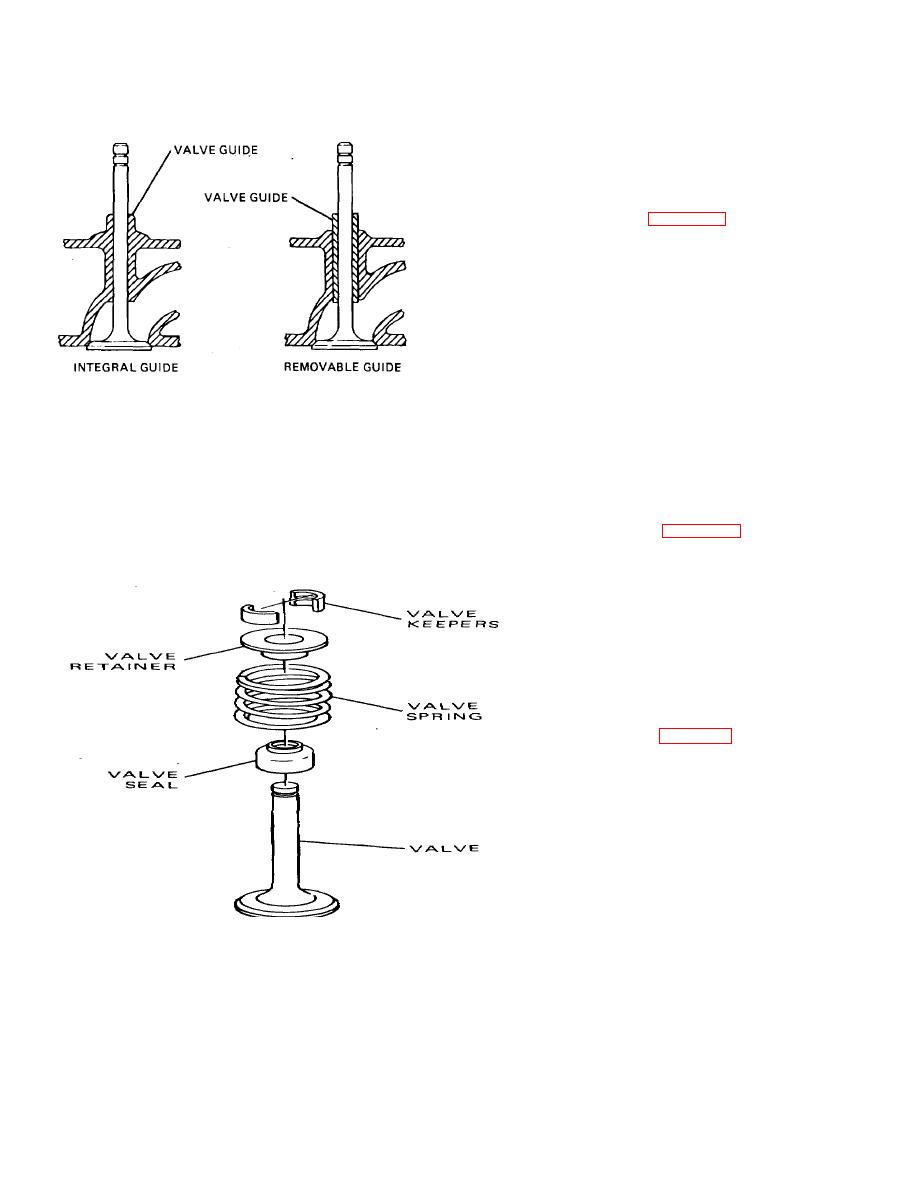
| Tweet |

Custom Search
|
|

|
||
 TIM 9-8000
tappets or the lifters are the connecting link
between the camshaft and the valve
mechanism.
b. Camshaft Construction. Camshafts usually are made
from cast or forged steel. The surfaces of the lobes
are hardened for long life.
c. Camshaft Support (Fig. 3-52). The cam-shaft is
supported, and rotates, in a series of bearings along
its length. The bearings usually are pressed into their
mountings and made of the same basic construction
as crankshaft bearings. In some cases, when the
engine is constructed of aluminum, the camshaft is
supported directly in its mountings and no bearings
are used. The thrust, or the back and forth
movement, usually is taken up by the thrust plate,
which bolts to the front of the engine block. Any
Figure 3-49. Valve Guides.
forward thrust loads are then taken up by the front
camshaft bearing journal. The drive gear or sprocket
flexible washer between the two pieces. A series of balls
then is bolted to the front of the camshaft. Its rear
between the retainer pieces roll on machined ramps as
surface rides against the thrust plate to take up any
pressure is applied and released from the opening and
rearward thrust.
the closing of the valve. The movement of the balls up
d. Driving the Camshaft. The following are the three
and down the ramps translates into rotation of the valve.
basic configurations for driving the cam-shaft.
3-13. Camshafts and Tappets.
a. General. The camshaft provides for the opening and
(1) Gear Drive (A, Fig. 3-53). A gear on the
closing of the engine valves. The
crankshaft meshes directly with another gear on
the camshaft. The gear on the crankshaft usually
is made of steel, while the gear on the camshaft
may be steel for heavy-duty applications, or it
may be made of aluminum or pressed fiber
when quiet operation is a major consideration.
The gears are helical in design (para 19-4).
Helical gears are used because they are
stronger, and they also tend to push the
camshaft rearward during operation to help
control thrust.
(2) Chain Drive (B, Fig. 3-53). Sprockets on the
camshaft and the crankshaft are linked by a
continuous chain. The sprocket on the
crankshaft usually is made of steel, while the
sprocket on the camshaft may be steel for
heavy-duty applications. When quiet operation is
a major consideration, an aluminum sprocket
with a nylon covering on the teeth is used. There
are two common types of timing chains. One is a
silent link-type chain that is used in standard and
light-duty applications. The other is the roller-link
chain, which is used in heavy-duty applications.
The
Figure 3-50. Valve Springs, Retainers,
TA233379
and Seals.
3-29
|
||
 |
||